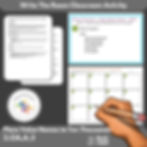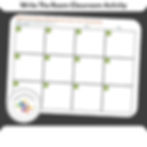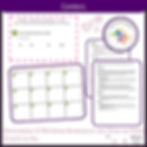Reading comprehension is a fundamental skill that underpins academic success and daily living. For students in special education, developing strong reading comprehension skills is essential. These students often face unique challenges that require targeted interventions and strategies to support their learning journey. This blog post will explore various goals and objectives for enhancing reading comprehension, tailored to meet the diverse needs of special education students.

Key Takeaway
Special education teachers can significantly improve their students' reading comprehension by setting clear, measurable goals and using a variety of strategies to address specific reading challenges.
Reading Comprehension: Use of Background Knowledge
Sarah, a third-grader, loves animals and often visits the zoo with her family. During a reading session, her teacher uses a story about a trip to the zoo to help her connect her experiences to the text. Sarah excitedly shares her knowledge about different animals and relates them to the story, significantly enhancing her comprehension.
By (date), [student's name] will use background knowledge and prior experience to interpret stories, improving comprehension skills from [current level] to [target level] as measured by [assessment method, e.g., running records, probes, anecdotal records, work samples, etc.].
Objectives:
[Student's name] will identify key elements of a story using background knowledge in 8/10 trials.
[Student's name] will relate personal experiences to story events in 8/10 trials.
[Student's name] will answer comprehension questions using prior knowledge in 8/10 trials.
Reading Comprehension: Fact vs. Fiction
Jake, a fifth-grader, often struggles with distinguishing between facts and imaginative content. His teacher uses a science textbook and a fantasy novel to teach him how to identify factual information versus fictional elements. Over time, Jake learns to explain why certain statements are facts while others are fictional, improving his overall comprehension skills.
By (date), [student's name] will discriminate between fact and fiction, improving comprehension skills from [current level] to [target level] as measured by [assessment method].
Objectives:
[Student's name] will correctly identify factual statements in 8/10 trials.
[Student's name] will correctly identify fictional statements in 8/10 trials.
[Student's name] will explain the difference between fact and fiction in 8/10 trials.
Reading Comprehension: Story Structure
Liam, a second-grader, has difficulty understanding the sequence of events in a story. His teacher uses a simple storybook and helps him identify the beginning, middle, and end of the story by using visual aids and sequencing activities. Liam gradually becomes more adept at identifying story structure, which aids his comprehension.
By (date), [student's name] will recognize that stories have a beginning, middle, and end, improving comprehension skills from [current level] to [target level] as measured by [assessment method].
Objectives:
[Student's name] will identify the beginning of a story in 8/10 trials.
[Student's name] will identify the middle of a story in 8/10 trials.
[Student's name] will identify the end of a story in 8/10 trials.
Reading Comprehension: Predicting Outcomes
Emma, a fourth-grader, enjoys mysteries but often finds predicting outcomes challenging. Her teacher reads a mystery story and pauses at key points to ask Emma what she thinks will happen next. Emma makes predictions and explains her reasoning. After finishing the story, they discuss which predictions were accurate and why, helping Emma refine her prediction skills.
By (date), [student's name] will predict what happens next in a story, improving comprehension skills from [current level] to [target level] as measured by [assessment method].
Objectives:
[Student's name] will make logical predictions based on story events in 8/10 trials.
[Student's name] will explain reasons for predictions in 8/10 trials.
[Student's name] will confirm or revise predictions after reading in 8/10 trials.
Reading Comprehension: Discussion of Predictions
Noah, a third-grader, is encouraged to participate in group reading sessions where students make predictions about the story. Noah shares his predictions and listens to his peers' ideas. This collaborative environment helps Noah engage more deeply with the text and improve his prediction and discussion skills.
By (date), [student's name] will make predictions and discuss stories that have been read, improving comprehension skills from [current level] to [target level] as measured by [assessment method].
Objectives:
[Student's name] will participate in discussions about story predictions in 8/10 trials.
[Student's name] will make predictions about upcoming story events in 8/10 trials.
[Student's name] will compare initial predictions with actual story outcomes in 8/10 trials.
Reading Comprehension: Storytelling from Pictures
Olivia, a kindergartener, uses picture cards to create and tell her own stories. Her teacher helps her sequence the pictures correctly and encourages her to describe what is happening in each one. This activity helps Olivia develop her narrative skills and understand the structure of stories better.
By (date), [student's name] will tell a story from pictures (to match illustrations), improving comprehension skills from [current level] to [target level] as measured by [assessment method].
Objectives:
[Student's name] will sequence pictures to tell a coherent story in 8/10 trials.
[Student's name] will use descriptive language to match illustrations in 8/10 trials.
[Student's name] will identify key details in pictures to enhance storytelling in 8/10 trials.
Reading Comprehension: Story Retelling
Aiden, a first-grader, listens to his teacher read a story and then retells it to his classmates, focusing on the main events, characters, and setting. With practice, Aiden becomes more confident in his ability to retell stories accurately, which enhances his comprehension.
By (date), [student's name] will retell stories that have been read aloud, including character identification, setting, problem, solutions, and sequence of events, improving comprehension skills from [current level] to [target level] as measured by [assessment method].
Objectives:
[Student's name] will retell the main events of a story in correct sequence in 8/10 trials.
[Student's name] will identify characters and settings in a story in 8/10 trials.
[Student's name] will describe the problem and solution in a story in 8/10 trials.
Reading Comprehension: Identifying Story Elements
By (date), [student's name] will identify sequence of events, main ideas, and details or facts in literary and informational text, improving comprehension skills from [current level] to [target level] as measured by [assessment method].
Objectives:
[Student's name] will identify the sequence of events in a text in 8/10 trials.
[Student's name] will identify the main idea of a text in 8/10 trials.
[Student's name] will recall key details or facts from a text in 8/10 trials.
Reading Comprehension: Responding to Readings
Sophia, a fifth-grader, often reads informational texts but struggles to identify key details. Her teacher uses graphic organizers to help Sophia break down the text and identify the main ideas and important facts. This strategy helps Sophia improve her comprehension of informational texts.
By (date), [student's name] will respond to readings in various ways (e.g., story mappings, topic webbings), improving comprehension skills from [current level] to [target level] as measured by [assessment method].
Objectives:
[Student's name] will complete a story map with key elements of a text in 8/10 trials.
[Student's name] will create topic webs to show understanding of a text in 8/10 trials.
[Student's name] will participate in discussions about readings using graphic organizers in 8/10 trials.
Reading Comprehension: Simple Repetitive Language Patterns
By (date), [student's name] will read (or memorize) books with simple repetitive language patterns, improving comprehension skills from [current level] to [target level] as measured by [assessment method].
Objectives:
[Student's name] will read books with simple language patterns independently in 8/10 trials.
[Student's name] will recognize and predict repetitive patterns in texts in 8/10 trials.
[Student's name] will participate in reading aloud books with simple patterns in 8/10 trials.
Reading Comprehension: Using Reference Materials
Ethan, a second-grader, enjoys using story maps and topic webs to organize his thoughts about a reading. His teacher encourages him to draw connections between different parts of the text, which helps Ethan better understand and remember what he has read.
By (date), [student's name] will identify and use reference materials and nonfiction sources (e.g., library, picture dictionary, and wall charts) to locate information, improving comprehension skills from [current level] to [target level] as measured by [assessment method].
Objectives:
[Student's name] will locate information using a picture dictionary in 8/10 trials.
[Student's name] will use library resources to find information on a topic in 8/10 trials.
[Student's name] will use wall charts to answer questions about a topic in 8/10 trials.
Setting specific, measurable IEP goals for reading comprehension can help special education students make significant progress. By focusing on these targeted objectives, teachers can support their students' growth in reading comprehension, leading to greater academic success and independence.
For more resources and tools to support your teaching, explore our IEP Goal Bank, Lesson Plan Templates, and TeachTastic Store.
































